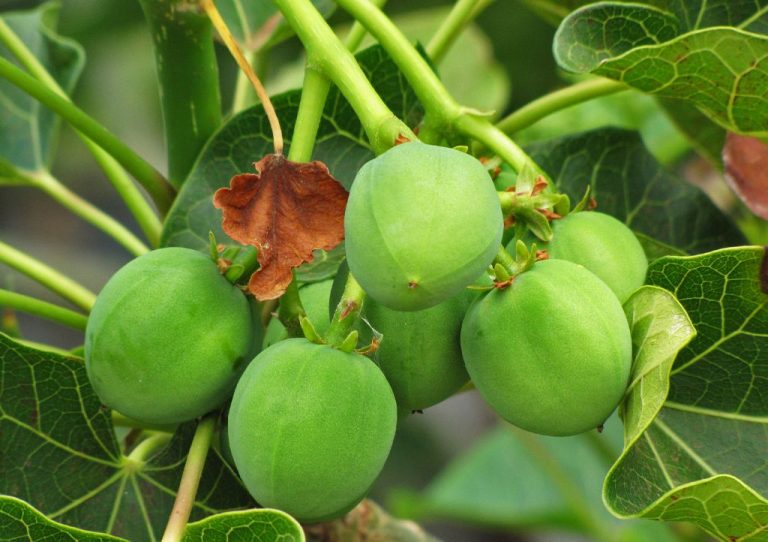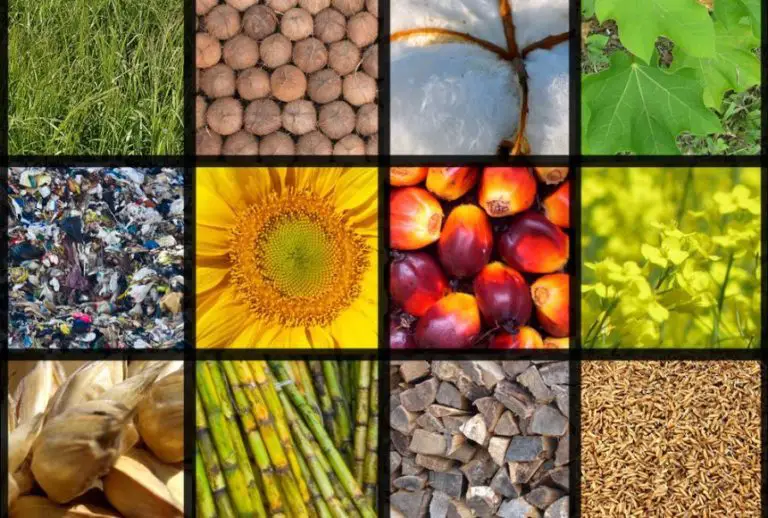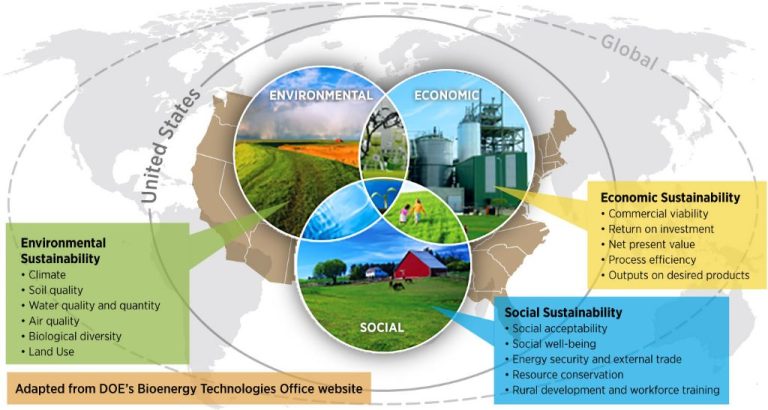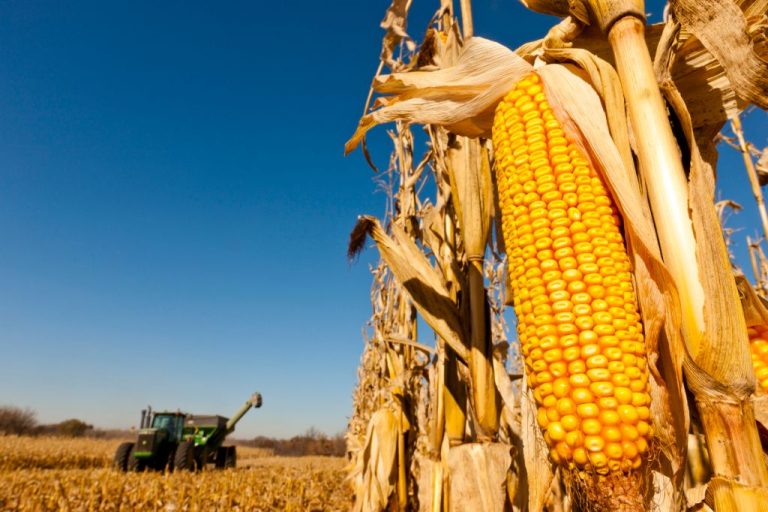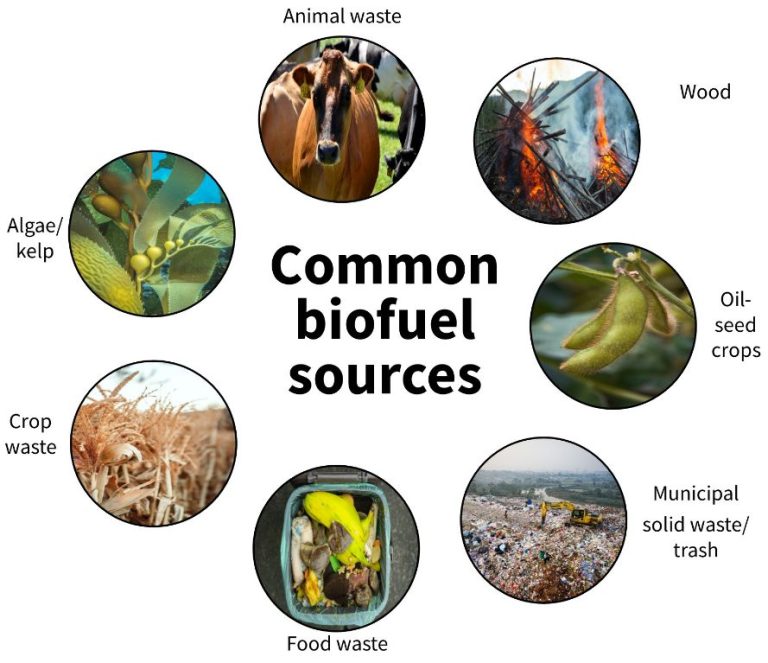What Is A Feedstock For Biofuel?
Biofuels are fuels produced directly or indirectly from organic matter (biomass) including plant materials and animal waste. The most common types of biofuels are ethanol and biodiesel. Ethanol is typically made from corn, sugarcane or other plant materials, while biodiesel is made from oils or fats using a process called transesterification [1].
Biofuels provide a renewable alternative to fossil fuels like gasoline and diesel. Using biofuels can reduce greenhouse gas emissions because the plants absorb carbon dioxide as they grow. Biofuels are also attractive because they can be domestically produced, reducing dependence on foreign oil. Some of the most common feedstocks for biofuel production include corn, sugarcane, soybeans, rapeseed and palm oil. Agricultural residues, forestry waste and even municipal solid waste can also be used as biofuel feedstocks.
As concerns over climate change and energy security grow, there is increasing interest in scaling up biofuel production globally. However, the sustainability and efficiency of different biofuel feedstocks continues to be debated.
Types of Feedstocks
There are several main types of feedstocks that can be used to produce biofuels:
Plant Oils
Plant oils from crops like soybeans, canola, palm, and jatropha can be used to produce biodiesel through a process called transesterification. Biodiesel is a diesel fuel substitute and the most common biofuel in Europe (https://www.eia.gov/pressroom/releases/press477.php). Soybean oil is one of the most common biodiesel feedstocks in the United States.
Starch Crops
Starch crops like corn and wheat can be broken down into fermentable sugars and distilled into ethanol, a gasoline substitute. Corn is the most widely used ethanol feedstock in the United States, accounting for over 90% of production (https://www.sciencedirect.com/science/article/abs/pii/S2214629621001468).
Sugar Crops
High-sugar crops like sugarcane and sweet sorghum can be directly fermented into ethanol without breakdown. Sugarcane is the primary feedstock for ethanol production in Brazil.
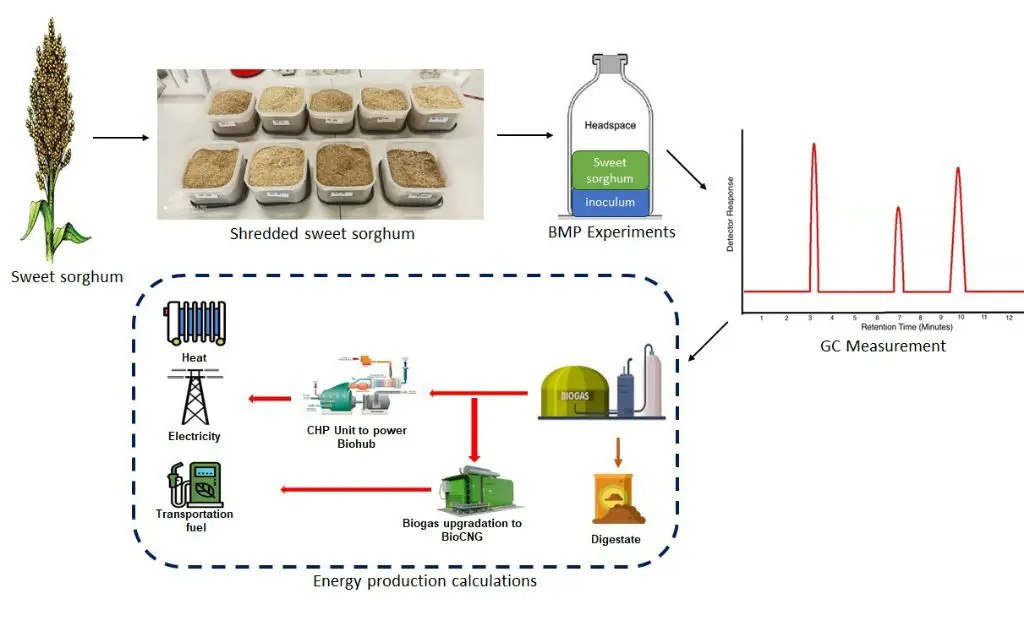
Cellulosic Biomass
Non-food plant materials like crop residues, grasses, and woody biomass contain cellulose and lignin that can be broken down into sugars and converted into biofuels through biochemical or thermochemical processes. Cellulosic feedstocks have the potential for high yields with low inputs.
Plant Oils
Plant oils are one of the most common feedstocks used for producing biodiesel. The oils are extracted from the seeds of oilseed crops through pressing, crushing, or solvent extraction. Some of the most commonly used plant oils for biodiesel production include:
Soybean oil – Soybean oil is one of the primary feedstocks for biodiesel, especially in the United States. According to a 2018 report, soybean oil accounts for over half of the feedstocks used in US biodiesel production (Singer, 2018). Soybean oil is readily available as a byproduct from soybean processing for food uses.
Canola oil – After soybean oil, canola oil is the second most common plant oil feedstock for biodiesel, particularly in Europe and Canada. Compared to other vegetable oils, canola oil requires less processing to convert to biodiesel (Keneni et al., 2017).
Palm oil – Palm oil is a significant feedstock for biodiesel production in tropical countries like Indonesia and Malaysia where oil palm trees grow readily. However, large-scale use of palm oil has raised concerns about sustainability and deforestation (Keneni et al., 2017).
Jatropha oil – Jatropha is a drought-resistant, non-edible plant that produces seeds with high oil content. Jatropha oil is gaining interest as a sustainable biodiesel feedstock that doesn’t compete with food production (Keneni et al., 2017). However, jatropha farming is not yet economically viable on a large scale.
Algae oil – Algae can produce oil through photosynthesis much more efficiently than conventional oilseed crops. Algae oils show potential as a renewable and sustainable biodiesel feedstock, but producing algae oil affordably at commercial scale remains a challenge (Singer, 2018).
Starch Crops
Some of the most common starch crops used for biofuel production are corn, wheat, rice and barley. These crops are rich in starches that can be converted into sugars and then fermented into ethanol, a commonly used biofuel.
Corn is the primary starch crop used for ethanol production, especially in the United States. Roughly 40% of the corn crop grown in the US goes towards ethanol production. The starch in corn kernels can be extracted and converted into glucose sugars through an enzymatic process. The sugars are then fermented by yeast into ethanol which is distilled and concentrated to fuel-grade levels.
Wheat and barley are other cereal grains that contain high levels of starch suitable for ethanol production. The process is similar, involving grinding the grains, converting the starches to sugars, and then fermenting and distilling to produce ethanol fuel. The use of wheat and barley for ethanol is more common in Europe than in the US.
Rice is also a starchy grain that can be utilized for biofuel production in some parts of the world. The high starch content in rice makes it a viable feedstock for ethanol production through similar processing steps. However, corn generally remains the most widely used starch crop for fuel ethanol globally.
Sugar Crops
Sugar crops are an important feedstock for biofuel production. The main sugar crops used are sugarcane, sugar beets, and sweet sorghum. Sugarcane and sugar beets are commonly used to produce sugar which can then be fermented to make bioethanol. Sweet sorghum can be processed into syrup which is similarly fermented into bioethanol.
Sugarcane is currently the primary feedstock for bioethanol globally, especially in tropical regions like Brazil. It has a high sugar content and yields more bioethanol per acre than other crops. Sugarcane bagasse, the fibrous material left over after processing, can also be used for cellulosic ethanol production or burned for energy in the sugar mill. However, sugarcane requires significant water and fertilizer inputs.[1]
Sugar beets have been an important ethanol feedstock in temperate regions like Europe. They can be grown in colder climates than sugarcane and have lower water requirements. However, sugar beet yields and ethanol conversion rates are lower. The pulp leftover from processing is often used for animal feed.[2]
Sweet sorghum is an emerging bioethanol feedstock that can grow in dry, marginal environments. Both the juice from the crushed stalk and the remaining bagasse can be used for ethanol production. However, sweet sorghum currently has lower yields than sugarcane and sugar beets.
Cellulosic Biomass
Cellulosic biomass refers to plant-based materials that are composed of cellulose, hemicellulose, and lignin. Common sources of cellulosic biomass include crop residues, wood waste, and grasses.
Crop residues are the plant parts left in the field after harvesting the food or fiber portion of crops. Examples include corn stover (leaves, stalks, and cobs of corn plants), wheat straw, and sugarcane bagasse. Using crop residues as biofuel feedstocks provides additional income for farmers while utilizing materials that would otherwise be burned or left to decompose in the fields.
Wood waste from forestry and industry operations is another abundant source of cellulosic biomass. Sawmill residues, pulp and paper mill residuals, waste wood from construction, and tree trimmings from urban areas can all be used for biofuels. Utilizing wood waste reduces the environmental impact of burning or landfilling these materials.
Dedicated energy crops such as switchgrass, miscanthus, and hybrid poplar are fast-growing grasses and woody plants that produce high yields of biomass on marginal or unused land. While they require more inputs and management than waste materials, dedicated energy crops can provide consistent, scalable supplies of cellulosic feedstocks.[1]
Municipal Waste
Municipal solid waste (MSW) refers to everyday items we use and then throw away, such as product packaging, grass clippings, furniture, clothing, bottles, food scraps, newspapers, and batteries. As this waste decomposes in landfills, it produces landfill gas which is composed of roughly 50% methane and 50% carbon dioxide (Source 1). Methane is a potent greenhouse gas with 25 times the global warming potential of carbon dioxide. Capturing landfill gas prevents its release into the atmosphere, while also providing a renewable biofuel source.
The organic, biodegradable portion of MSW can be diverted from landfills and used for biofuel production. This includes food waste, green waste (yard trimmings), paper and cardboard. These organic materials can be anaerobically digested to produce biogas, which is then processed into renewable natural gas or transportation fuels like ethanol or biodiesel. According to the EPA, 33 million tons of food waste was generated in the U.S. in 2018, with only 6% diverted for composting/anaerobic digestion. Diverting more food waste and other organics to biofuel production provides environmental benefits by reducing both greenhouse gas emissions and landfill waste volumes (Source 2).
Algae
Algae has emerged as a promising feedstock for biofuel production. According to a 2022 study published in Algae: An emerging feedstock for biofuels production, algae is gaining traction due to its high oil content, rapid growth rate, and potential for scalable cultivation. Unlike conventional biofuel crops like corn and sugarcane, algae can be grown on marginal or non-arable land using saltwater or wastewater. Algae has an oil content between 20-50%, whereas the oil content of traditional oilseed crops ranges from just 4-40%. Furthermore, algae production yields per acre are estimated to be 4 to 10 times higher than conventional crops. The fast doubling time of algae, often within 24 hours, allows for multiple harvests per week. The high lipid production and rapid growth of algae make it an ideal candidate as a renewable and potentially carbon-neutral feedstock for biodiesel, biojet fuel, and other biofuels.
Choosing a Feedstock
When selecting a feedstock for biofuel production, there are several key factors to consider, including cost, availability, and sustainability. The cost of the feedstock can significantly impact the overall economics of a biofuel production facility. Anwar et al. (2021) identified cost as one of the top criteria for selecting a biodiesel feedstock. Cheaper feedstocks like waste oils or animal fats can improve profit margins compared to more expensive virgin oils. However, availability is also critical, as large facilities require a high volume of feedstock. Widespread, abundant feedstocks like corn starch or sugarcane ensure a steady supply. According to ETIP Bioenergy, high yielding biomass sources are preferred.
Sustainability should also factor into feedstock selection. As Ro et al. (2023) discuss, sources associated with food crop diversion or land use change may not align with sustainability goals. Residues, wastes, and purpose-grown energy crops can offer more sustainable options. Ultimately, identifying a cost-effective, readily available, and environmentally sound feedstock is essential for viable biofuel production.
Future of Biofuel Feedstocks
The future of biofuel feedstocks is trending toward advanced biofuels that utilize innovative new sources. With traditional feedstocks like corn ethanol reaching their limits, research is exploring advanced biofuels that provide even greater reductions in greenhouse gas emissions. Two major areas of advancement are in genetic engineering of energy crops and developing new feedstock sources.
Genetic engineering allows crops like corn and sugarcane to be modified to optimize biofuel production. Traits like higher yields, pest resistance, and drought tolerance lead to more sustainable, productive crops. Cellulosic biofuels that utilize non-edible plant parts can also be improved with genetic enhancements. Companies are developing specialized energy crops like hybrid poplar trees that grow rapidly and contain high cellulose content.
New feedstock sources being developed include agricultural residues, perennial grasses, and algae. Corn stover, the stalks and leaves left over after harvest, provides abundant cellulosic biomass once considered waste. Fast-growing perennial grasses like switchgrass require less energy and resources to cultivate versus annual row crops. Algae is an exciting feedstock that can be grown in areas unsuitable for conventional agriculture while utilizing waste resources like carbon emissions.
Advanced biofuels allow more feedstock options, sustainability benefits, and reduction in competition with food crops (Leibensperger et al. 2020). Continued synergy between stakeholders from industry, academia, and policy will further drive innovation in the future of biofuel feedstocks.

